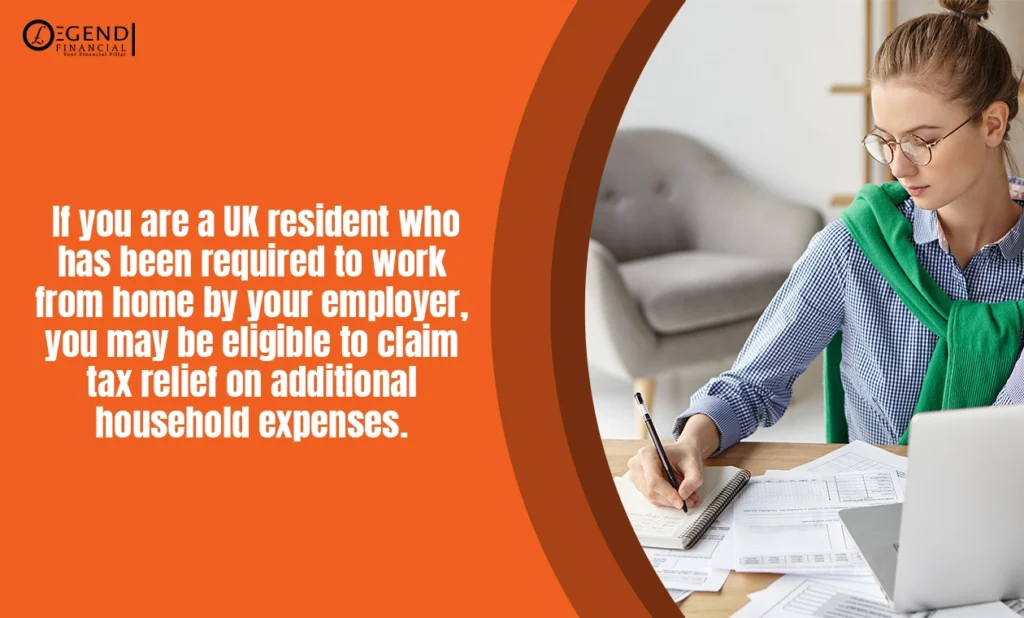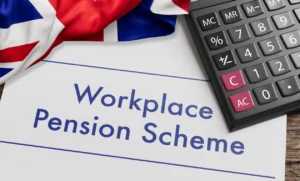Contents
When you are a middle-class earner, finding ways to save on taxes can make a big difference in your finances. It is easy to feel like all the best tax breaks are reserved for high earners or big businesses, but there are actually some strategies designed specifically for people in your situation. From tax-free savings accounts to special allowances for married couples, knowing these tax loopholes for the middle class can help you keep more of what you earn.
In this guide, we will explain simple, effective ways to cut down your tax bill and keep more of what you earn. Keep on reading!
Middle Class vs Upper-Middle Class
Figuring out where you fall in the UK’s income brackets can shed light on the opportunities available to you. According to 2023 ONS data, the average household disposable income is around £34,500. For middle-class households, incomes typically range between £26,000 and £45,000. These figures represent the third quintile, which sits comfortably around the national average. This group reflects a standard of living that balances financial security with everyday expenses.
On the other hand, upper-middle-class households enjoy higher disposable incomes, usually between £45,000 and £68,000. This places them in the fourth quintile, indicating a more comfortable lifestyle with greater financial flexibility. Households in this range often have more opportunities to save, invest, and take advantage of tax-saving strategies tailored to higher earners.
Note: This classification reflects average incomes and can vary depending on region, household composition, and economic trends, such as inflation adjustments.
How to Think About Tax Loopholes
Tax loopholes are often talked about as something illegal, but these are basically smart financial decisions to reduce your tax bill by taking advantage of the system approved rules.
For example, a family earning £50,000 per year decides to invest in a pension plan, reducing their taxable income by thousands of pounds while securing their retirement. That is a great example of how tax loopholes can work for you.
Top 7 Tax Loopholes for the Middle Class
One of the most important aspects of utilising tax loopholes is being informed. Tax laws are complex, and many people miss out on savings simply because they are not aware of what is available to them. Here are top 7 tax reduction strategies that you may or may not know about:
1. Personal Savings Allowance
Think of this as a “thank you” for saving. You can earn up to £1,000 in interest from your savings account without paying tax if you are a basic-rate taxpayer. If you are in the higher tax bracket, this allowance drops to £500, but it is still free money. You can take advantage by putting any spare cash in a high-interest account and letting it grow tax-free up to that limit.

2. Individual Savings Accounts (ISAs)
ISAs are great because they are tax-free, and there is a wide range of options. You can save or invest up to £20,000 each tax year in a Cash ISA or a Stocks and Shares ISA, and any interest or investment gains you make are completely tax-free. This is one of the simplest ways to grow your money without worrying about paying a portion of it to HMRC. Whether you are saving for a rainy day or building long-term investments, ISAs can help you reach your financial goals faster.
3. Pension Contributions
Pension contributions remain a powerful tool for tax savings in the UK. For the 2024/25 tax year, you can contribute up to £60,000 annually to your pension and receive tax relief.
Higher-rate taxpayers can claim additional relief on their Self-Assessment tax return. Additionally, the lifetime allowance, which previously limited the total amount you could save in a pension, has been abolished from April 2023. This means you can now save more for your retirement without worrying about tax charges.
Read more: Tax relief on pension contributions and how it works
4. Dividend Allowance
For the tax year 2024/25, if you own shares in a company (even if it is your own business), you can receive up to £500 in dividend income without paying tax. This is particularly helpful for small business owners who can take some of their earnings as dividends, which often come with a lower tax rate than traditional income. It is a straightforward way to reduce what you owe while rewarding your investment.
5. Marriage Allowance
If you are married or in a civil partnership, this allowance lets one partner transfer £1,260 of their personal allowance to the other, which can save up to £252 in taxes each year. The catch is that one spouse has to earn below the personal allowance limit (currently £12,570), and the other has to be a basic-rate taxpayer. If this sounds like your situation, it is an easy way to reduce your household’s overall tax bill.
6. Annual Investment Allowance for Self-Employed
If you are self-employed or run a small business, you can deduct the cost of certain big-ticket purchases—like machinery or work equipment—from your taxable income through the Annual Investment Allowance. This allowance can go up to £1 million, meaning if you need to buy, say, a new van or computer system, the entire cost can reduce your taxable profit, effectively lowering your tax bill. It is a significant benefit for anyone who regularly needs to invest in equipment to keep their business running smoothly.
7. Mortgage Interest Relief for Rental Income
For those with rental properties, this relief can make a big difference. If you have borrowed against your main home to fund a rental property, you can offset the interest paid on that mortgage against the rental income, reducing the amount you owe on your rental earnings. Though recent tax changes have limited how much interest can be deducted, there is still a portion available for relief, which can help anyone balancing home ownership with property investments.
These strategies might seem small on their own, but together they can add up to a significant reduction in what you pay each year.
Some Well-Known Tax Breaks for the Middle Class
Tax breaks and tax loopholes might sound similar, but they serve very different purposes. Tax breaks are deliberate policies designed to offer relief to taxpayers, such as allowances, deductions, or credits that lower taxable income. In contrast, tax loopholes are more technical and not very easy to spot, hence require the help of financial experts.
While loopholes are commonly associated with higher earners, tax breaks are accessible tools that middle-class households can use to save money and reduce financial strain. Here are some key tax breaks for the middle class that are designed to lower your liabilities.
Blind Person’s Allowance
For the 2024/25 tax year, if you are registered as blind or severely sight impaired, you may be entitled to the Blind Person’s Allowance. It can provide an additional £3,070 of tax-free income, on top of the standard Personal Allowance.
Child Tax Credit & Universal Credit
Families with children may be eligible for means-tested Child Tax Credit or Universal Credit, depending on their income. These benefits help ease the cost of raising children by providing extra financial support for families with lower or middle incomes.
Work-Related Expenses
Middle-class earners may also be able to claim tax relief on certain work-related expenses, such as uniforms, professional fees, and equipment. If you work from home, you might be able to claim a portion of your household bills, such as electricity and internet. Many workers overlook these deductions, but they can add up to significant savings.
Childcare Vouchers and Tax-Free Childcare
For parents, Tax-Free Childcare allows you to save up to £2,000 per year, per child, on childcare costs. You can set up an account where the government will contribute 20% of your contributions, up to the £2,000 limit. Additionally, Childcare Vouchers, offered by some employers, are also a popular option, although new applicants can no longer join this scheme.
These tax breaks are designed to help middle-income earners keep more of their money, support their families, and plan for the future.
Check out more tax saving tips UK in 2024
Tax Loopholes for the Upper Middle Class
While the middle class typically uses straightforward tax breaks like deductions or credits, the upper middle class often has access to more advanced strategies to reduce their tax bills.
With higher incomes and access to expert advice, upper-middle-class earners can make use of opportunities that are not always practical or available for others. It is all about knowing the rules and using them to your advantage. Here are four commonly used tactics:
1. Writing Off Expensive Assets for Business Use
Business owners often use this strategy to lower their taxable income. For instance, purchasing assets like vehicles or equipment for business purposes can result in tax deductions. These tax-deferred write-offs, help lower the taxable income. Over time, depreciation can be applied to such assets, reducing the total tax due. This strategy works best when the expenses are genuinely business-related, so keeping accurate records is essential. This can be seen as a way to reduce both personal and corporate tax liabilities by utilising expenses that qualify under tax law.
2. Taking Small Salaries
Many upper-middle-class earners reduce their taxable income by taking small salaries and supplementing their income through dividends or capital gains. By keeping their salary below certain thresholds, they avoid higher tax brackets. For example, directors of small businesses might structure their income tax to minimise liabilities, taking advantage of the lower rates applied to qualified dividends and capital gains. This method also helps to lower National Insurance contributions and can be a way to optimise one’s tax return.
3. Becoming Philanthropic
In the UK, donations to registered charities can be deducted from taxable income under the Gift Aid scheme. This practice is especially useful when donations are made through tax-deductible trusts or foundations. In fact, these donations can become a long-term way to reduce wealth taxes, benefiting both the charity and the taxpayer. Moreover, it helps build a legacy of support for important causes while also being financially advantageous.
4. Using Tax-Advantaged Accounts
By funneling capital gains or investment profits into tax-deferred accounts like pensions or ISAs, upper-middle-class earners can grow their wealth without immediately paying taxes. Contributions to pensions, for example, can be deducted from taxable income, lowering overall tax bills. Similarly, ISAs offer tax-free growth, meaning that income and capital gains generated within the account are not subject to taxes.
By using 401(k) plans, traditional IRAs, or Roth IRAs, individuals can shelter large amounts of wealth from taxes. Contributions made to HSAs (Health Savings Accounts) also enjoy tax-free growth, adding another layer of financial protection.
Read relevant article here: Tips to reduce income tax on investments
5. Transferring Estates Through Trusts
The wealthy often use trusts to avoid inheritance tax by transferring ownership of their wealth to heirs without it being counted as part of their estate. This strategy allows assets to escape wealth taxes, reducing the estate’s value when the individual dies. Different types of trusts, like family trusts and charitable remainder trusts, help minimise tax liability and avoid capital gains taxes on assets like real estate and investments. By carefully managing these trusts, the rich can pass on wealth more efficiently, and in some cases, reduce inheritance tax entirely.
FAQs on UK Taxation
Wealth taxes have a strong public support in the UK, with 78% of people backing higher taxes on assets over £10 million. The Wealth Tax Commission has suggested a one-off wealth tax for millionaire couples at 1% per year for five years, which could raise £260 billion.
The middle class in the UK influences tax rates through the country’s income tax bands. A typical two-parent family with three children and a household income of £55,000 currently faces the highest effective tax rate. The additional rate of income tax, which is 45%, is levied on earnings exceeding £125,140 per year.
You should organise your tax planning strategy at the beginning of the year and continuously monitor it, especially before any major financial decisions, life events, or tax deadlines. We also advise that you review your strategy at the end of the year to maximise deductions and credits.
Get Expert Financial Advice
Spotting tax loopholes for the middle class can be tricky on your own. Each financial situation is unique, and if you are not well-versed in taxes, you could be missing out on incredible tax saving opportunities. Let Legend Financial guide you through this process. Our expert financial advisors understand the nuances that impact middle-class families and individuals, from deductions and credits to strategic tax planning. We work closely with you to analyse your income, expenses, and investment strategies, ensuring that you maximally benefit from available tax breaks. Do not leave your money to chance.
Schedule a free consultation today!












